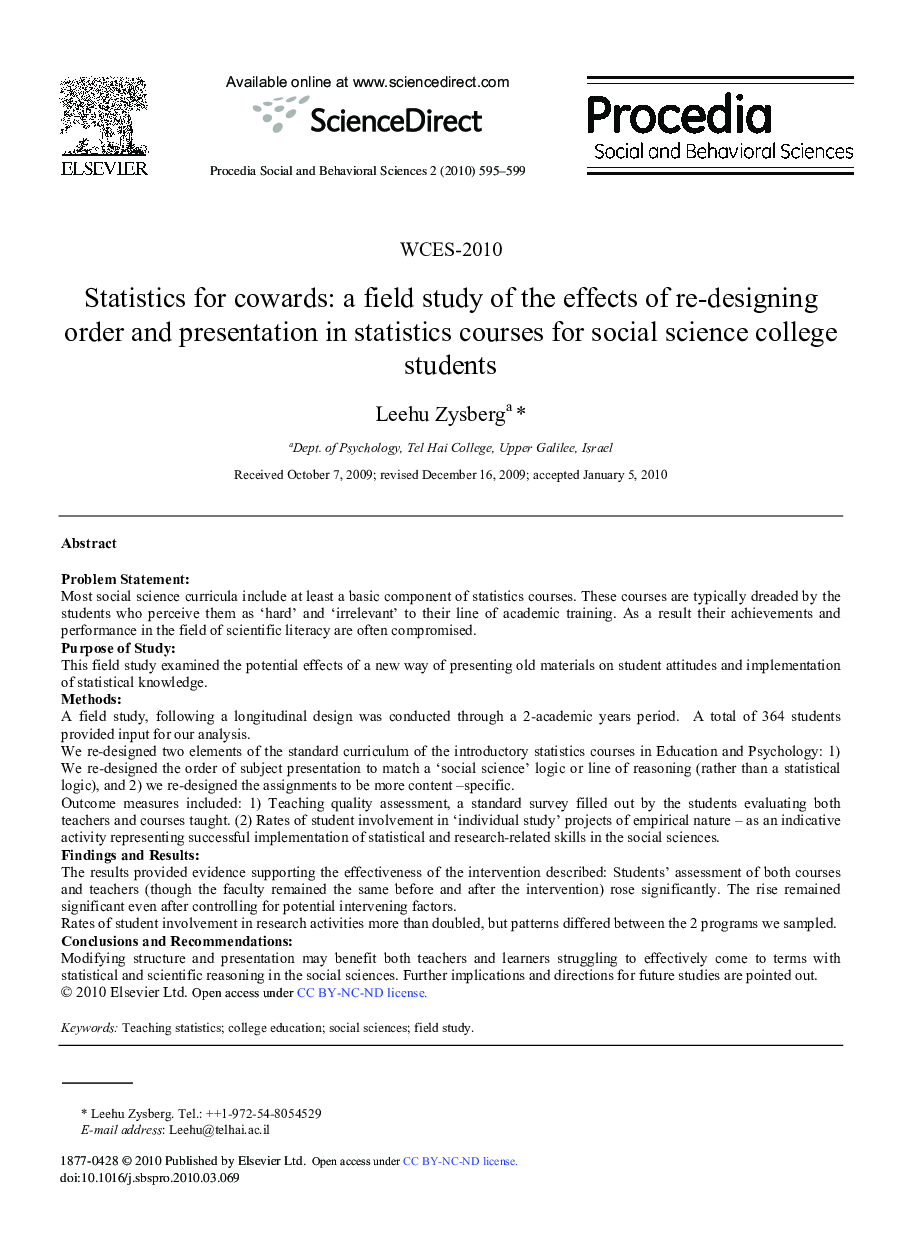| Article ID | Journal | Published Year | Pages | File Type |
|---|---|---|---|---|
| 1125467 | Procedia - Social and Behavioral Sciences | 2010 | 5 Pages |
Problem StatementMost social science curricula include at least a basic component of statistics courses. These courses are typically dreaded by the students who perceive them as ‘hard’ and ‘irrelevant’ to their line of academic training. As a result their achievements and performance in the field of scientific literacy are often compromised.Purpose of StudyThis field study examined the potential effects of a new way of presenting old materials on student attitudes and implementation of statistical knowledge.MethodsA field study, following a longitudinal design was conducted through a 2-academic years period. A total of 364 students provided input for our analysis. We re-designed two elements of the standard curriculum of the introductory statistics courses in Education and Psychology: 1) We re-designed the order of subject presentation to match a ‘social science’ logic or line of reasoning (rather than a statistical logic), and 2) we re-designed the assignments to be more content –specific. Outcome measures included: 1) Teaching quality assessment, a standard survey filled out by the students evaluating both teachers and courses taught. (2) Rates of student involvement in ‘individual study’ projects of empirical nature – as an indicative activity representing successful implementation of statistical and research-related skills in the social sciences.Findings and ResultsThe results provided evidence supporting the effectiveness of the intervention described: Students’ assessment of both courses and teachers (though the faculty remained the same before and after the intervention) rose significantly. The rise remained significant even after controlling for potential intervening factors. Rates of student involvement in research activities more than doubled, but patterns differed between the 2 programs we sampled.Conclusions and RecommendationsModifying structure and presentation may benefit both teachers and learners struggling to effectively come to terms with statistical and scientific reasoning in the social sciences. Further implications and directions for future studies are pointed out.
